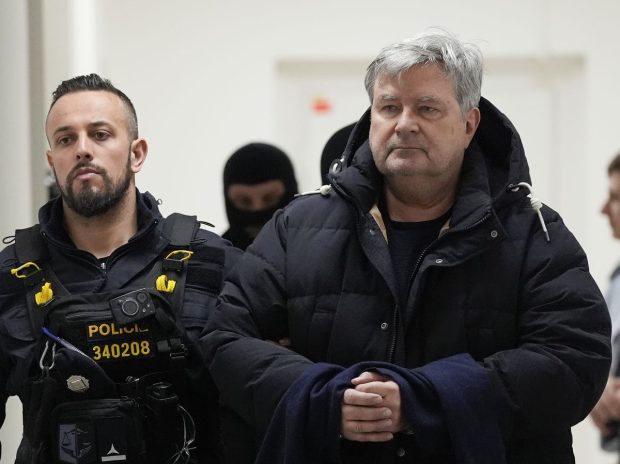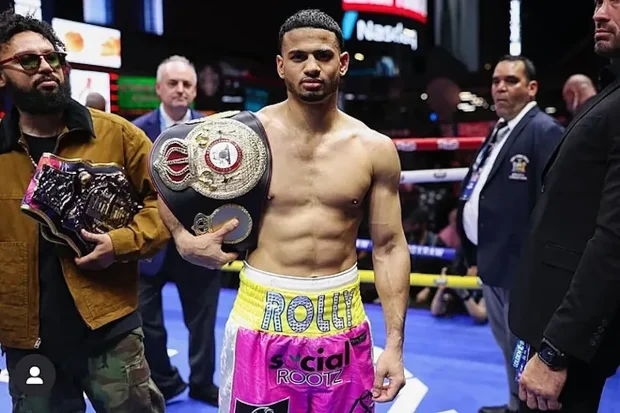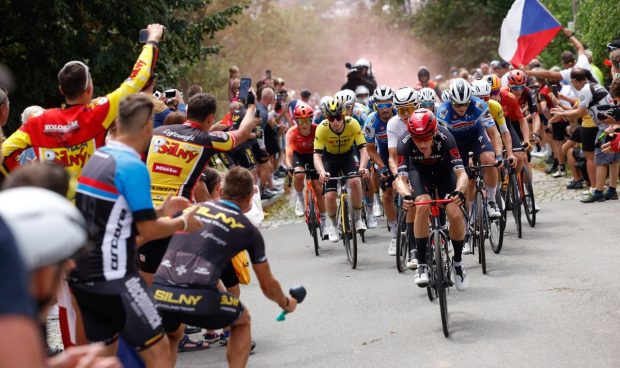
RALEIGH, N.C. — Outside of a couple of periods and a few isolated moments, it would’ve been unfair for the Carolina Hurricanes not to leave Lenovo Center with a 3-1 series lead over the Washington Capitals.
Despite an expected third-period push by Washington, that’s exactly what the Hurricanes earned for themselves, holding on for a 5-2 Game 4 win behind another strong night from goalie Frederik Andersen, a great penalty kill and goals from five different players. Strong five-on-five play was once again the foundation for Carolina — you’ve heard that before, no doubt — but the Hurricanes continue to show off in plenty of different ways.
Here’s what I saw in Game 4.
The Hall way
With 11 minutes, 36 seconds remaining in the game, Taylor Hall showed why the Hurricanes, amid all the Mikko Rantanen drama, made sure to come out of March’s NHL trade deadline with Hall in the mix. He remains a legitimate scoring threat on the middle six, and he used that offensive skill to put Carolina back up by a pair, 3-1.
Jack Roslovic with the feed, Taylor Hall with the finish! ✅ #StanleyCup
🇺🇸: @NHL_On_TNT & @SportsonMax ➡️ https://t.co/4TuyIATi3T
🇨🇦: @Sportsnet or stream on Sportsnet+ ➡️ https://t.co/4KjbdjVctF pic.twitter.com/0XDDvKSOFV— NHL (@NHL) May 13, 2025
With Washington pushing in the immediate aftermath of a goal by Jakob Chychrun that cut Carolina’s lead to 2-1, Hall slipped behind the Washington defense, stayed onside and carried a pass from Jack Roslovic in for a breakaway. Goal and — despite a classic Alex Ovechkin power-play goal to cut the lead — game over. That’s the sort of dagger Carolina has missed in the Rod Brind’Amour era. It was another big play from Roslovic, too, who had a goal and an assist in Game 3 after being a healthy scratch.
Advertisement
Washington can’t capitalize early
For the second straight game, Washington wasted a strong start — and unlike in Game 3, the Capitals couldn’t sustain it for a full 20 minutes, either. Washington got prime scoring chances right off the drop for both Connor McMichael and Aliaksei Protas, who blocked a shot, earned a clean chance in transition and hit the post. Sustained zone time followed. After 6 minutes, 34 seconds, the Capitals held a 7-1 lead in scoring chances and 3-0 lead in high-danger chances but couldn’t turn any of that into actual goals.
Around that time, Carolina snapped into form, preventing clears and forcing Washington’s skaters — particularly center Lars Eller, who unnecessarily played a Carolina high stick to keep the puck in the zone — into poor decisions. With 10:27 remaining, Capitals goaltender Logan Thompson stopped two prime chances in close for Jordan Staal to set up a faceoff in Washington’s zone. Less than a minute later, with the pressure still on, Hurricanes defenseman Shayne Gostisbehere made a slick play to keep the puck in, separate himself from Brandon Duhaime and beat Thompson with a well-placed shot from 54 feet.
The goal was the first of the series for either team in the first period.
“I think our starts have been pretty good, maybe beside (Game 2),” Gostisbehere said on Monday morning. “I don’t know if it really matters if we score or not. It just matters if they don’t score, really. For us, obviously it would be nice to get going in the first, but whatever the game has, the game gives us.”
Smothering penalty kill meets dismal power play
The bigger killer, though, was Washington’s near-total lack of productivity in six minutes of power play time in the first 20-plus minutes. Carolina’s penalty kill is outstanding, but the Capitals barely came close. They had several one-and-done trips with the man advantage — an egregious missed opportunity for a team almost guaranteed to lose the five-on-five battle.
Advertisement
The Capitals’ power-play issues were such that it was easy to imagine them carrying over to other phases of the game. Carolina’s second goal, making it 2-0 just over a minute into the second period, felt like proof. Carolina started the period on the kill — the Hurricanes’ Jordan Martinook had high-sticked Jakob Chychrun in the face late in the first — and after 36 seconds of strong work, went back into attack mode almost immediately. Thompson failed to glove a shot by Sebastian Aho, leaving the puck on the doorstep for Seth Jarvis.
The assist gave Aho at least 10 points for the seventh consecutive postseason. It’s a little played out to call him underrated; it’s also probably still accurate.
Capitals’ third-line liability
Last game, we made plenty of Carolina’s neutralization of Washington’s first line, particularly Ovechkin, and that’s no less true after Game 4 — but Washington’s third line has struggled mightily as well. The Capitals’ decision not to add another center at March’s trade deadline, leaving them with Eller as the only option with anything close to a playoff third-line center’s profile, is looming large.
In Game 2, a 3-1 Washington win, Eller played for just 9:06. In Game 3, with Ryan Leonard sent to the bench for Taylor Raddysh, the Hurricanes owned heavy advantages in shot attempts (19-4), scoring chances (9-1) and high-danger chances (3-1) with Eller, Raddysh and Andrew Mangiapane on the ice at five-on-five. In Game 4, with Leonard back in the mix, nothing improved; Eller and Leonard were particularly rough in the run-up to Carolina’s first goal.
Nikishin watch
For a few minutes ahead of puck drop, it seemed like we were going to get our first real look at Carolina defenseman Alexander Nikishin. The 23-year-old, 6-foot-4 top prospect took Carolina’s pregame warmup, possibly in case Jalen Chatfield was unable to play. Chatfield (and everyone else) was good to go, and Nikishin headed back up to the press box, where he’s spent games since arriving in North America on April 18.
Given how much practice time Nikishin has under his belt, how the series has gone thus far, and the likelihood that he could help Carolina down the line, it might make sense for Carolina to give him another look for Game 5 in Washington. Last season in the KHL, Nikishin was third league-wide in points by a defenseman in 2024-25 and captained a SKA St. Petersburg team that featured multiple former NHLers. Ahead of the season, this was The Athletic’s prospects expert Corey Pronman’s assessment of Nikishin: “He has length, mobility and puck-moving skill, and he’s mean as hell. He runs over opponents with his physicality, especially with how quickly he closes on checks.” Sounds like someone you’d like to have as ready as possible.
(Photo: Grant Halverson / Getty Images)
This news was originally published on this post .









Be the first to leave a comment